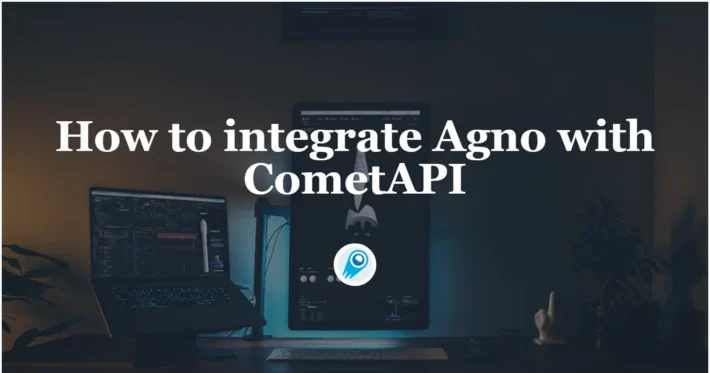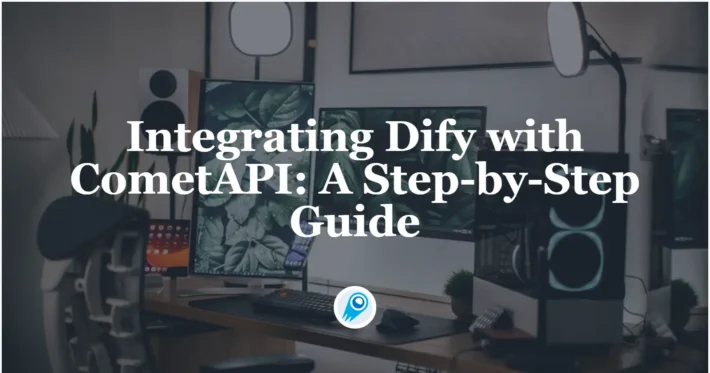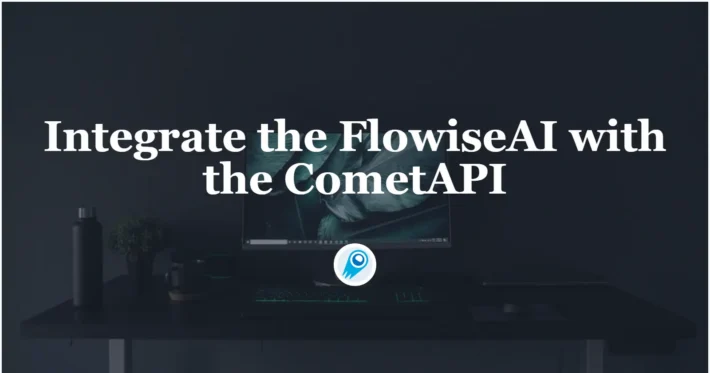How do you integrate Coze with CometAPI? 2 Methods to help you
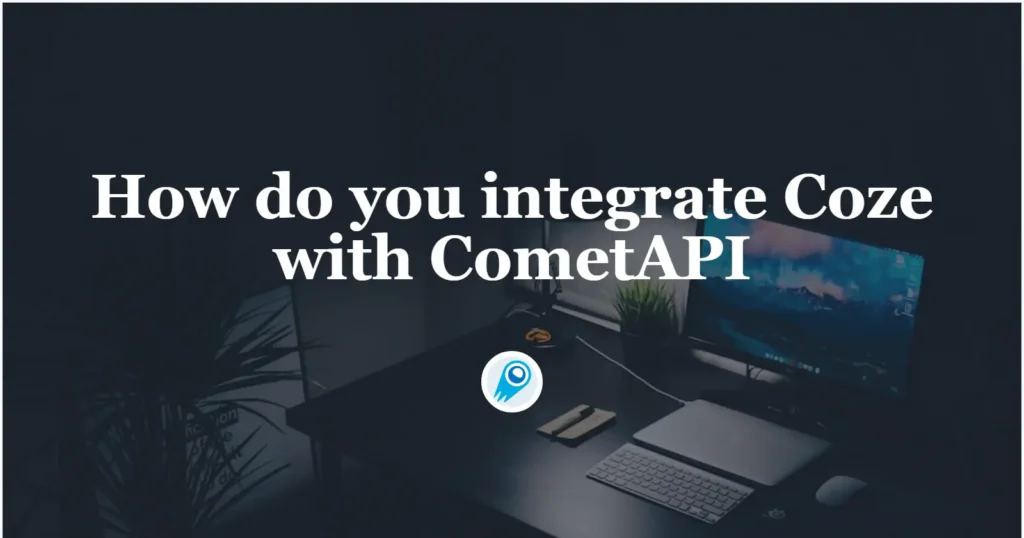
Integrating Coze — a visual AI agent and workflow platform — with CometAPI — a unified, OpenAI-compatible gateway to 500+ models — lets you combine Coze’s low-code agent tooling and plugin system with the breadth and cost/control advantages of CometAPI’s multi-model catalog. The result: agents that can call the exact model (or image/video endpoint) you want, switch providers without rewiring code, and scale from prototypes to production with unified billing.
What is Coze?
Coze is an AI application and agent development platform that focuses on visual workflow building, plugins/tools, and publishing agents as APIs or chat apps. It’s designed to let non-engineers and engineers alike assemble chatbots/agents from model choices, prompts, logic blocks, and external tools (plugins) — then publish those agents or workflows and call them programmatically.
Key Coze features you’ll use when integrating external AI APIs:
- Plugins / Tools: Coze can import/register external APIs as plugins and expose those endpoints as tools inside workflows. This is the official extension point for third-party services.
- Workflows / Agent Nodes: Workflows are visual sequences of nodes (logic, code, plugin/tool calls, API calls) that an agent executes to accomplish a task. Certain nodes let you make HTTP/API calls or invoke registered plugin tools.
- Publish as API: Completed agents/workflows can be published as API services (so other apps can call them) and can themselves call external APIs during execution.
What is CometAPI and why choose it?
CometAPI is a unified API gateway that provides access to hundreds of models across providers through one consistent interface (chat completions, image generation, etc.). Teams use CometAPI to avoid vendor lock-in, perform model A/B testing, and optimize costs by switching models without code rewrites. The service exposes standard endpoints such as https://api.cometapi.com/v1/chat/completions for chat-style generation.
Why pair CometAPI with Coze?
- Model choice & portability: point Coze agents at CometAPI and swap models centrally.
- Cost control and rate management: CometAPI can let you select lower-cost models for routine tasks and premium models for high-value queries.
- Centralized observability: single place to rotate keys, monitor usage, and apply quotas.
- Model choice & vendor portability: With CometAPI you can pick from many providers and models without creating separate integrations for each. That lets Coze agents A/B test models, fall back to cheaper options, or select specialty models (e.g., vision models, music models).
- Drop-in compatibility: CometAPI’s OpenAI-compatible surface often means minimal changes to existing OpenAI-style clients or Coze nodes expecting standard formats.
- Speed to market: Use Coze’s low-code workflows + CometAPI’s model catalog to assemble advanced multi-tool agents quickly (e.g., summarization with one model, image generation with another).
How can I integrate by searching for a CometAPI plugin in Coze?
Short answer: register/import CometAPI as a plugin, authorize it, and then call its tools inside workflows.
Step-by-step (plugin marketplace / import)
1. Enter Coze and click “Get Start”, create a agent to test.
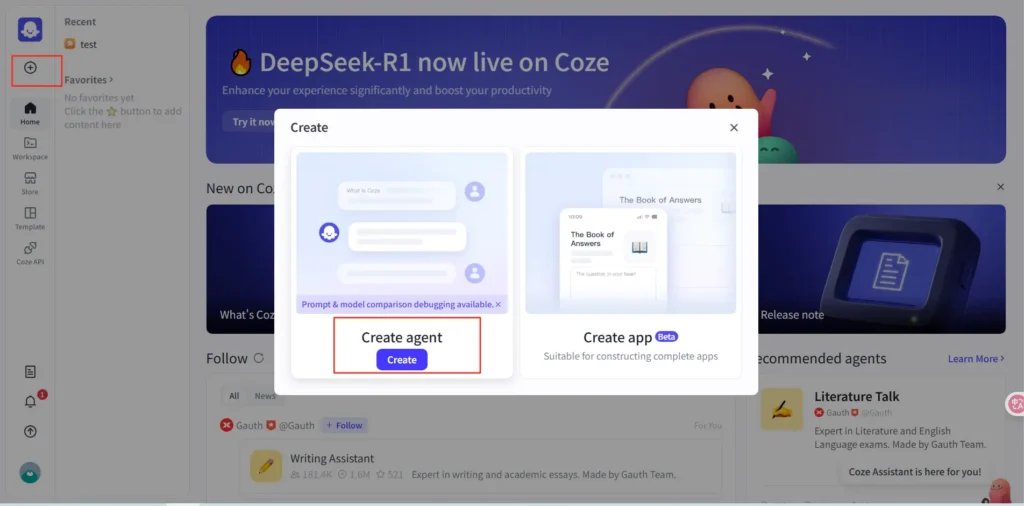
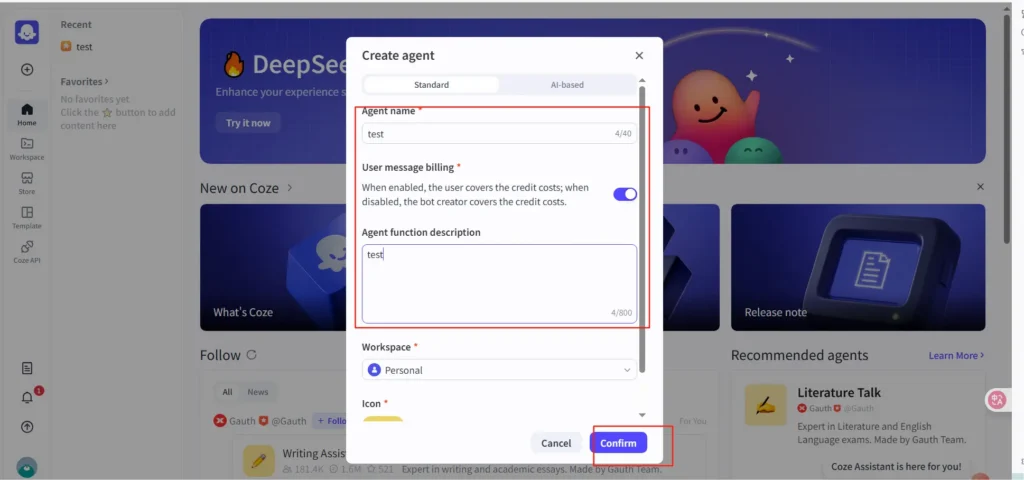
2. then add a workflow, select “add node”
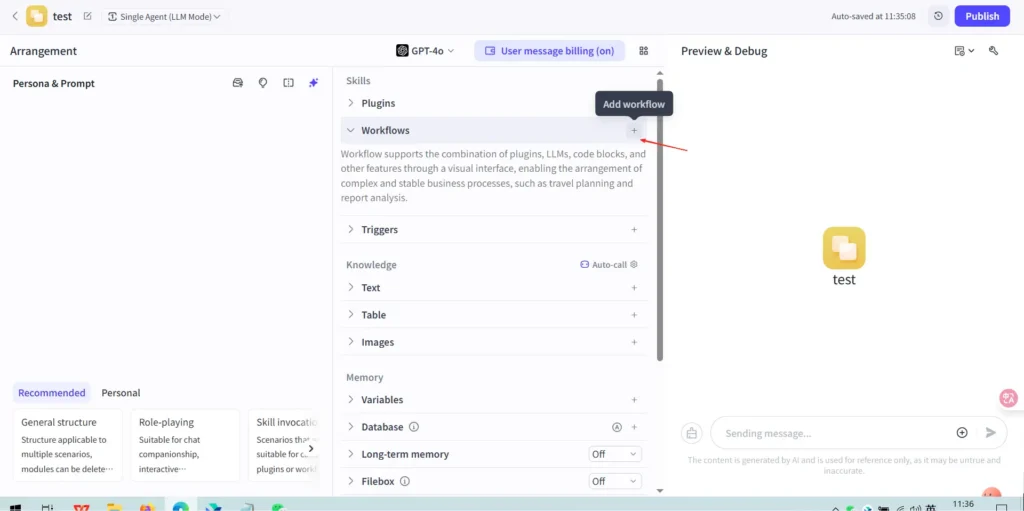
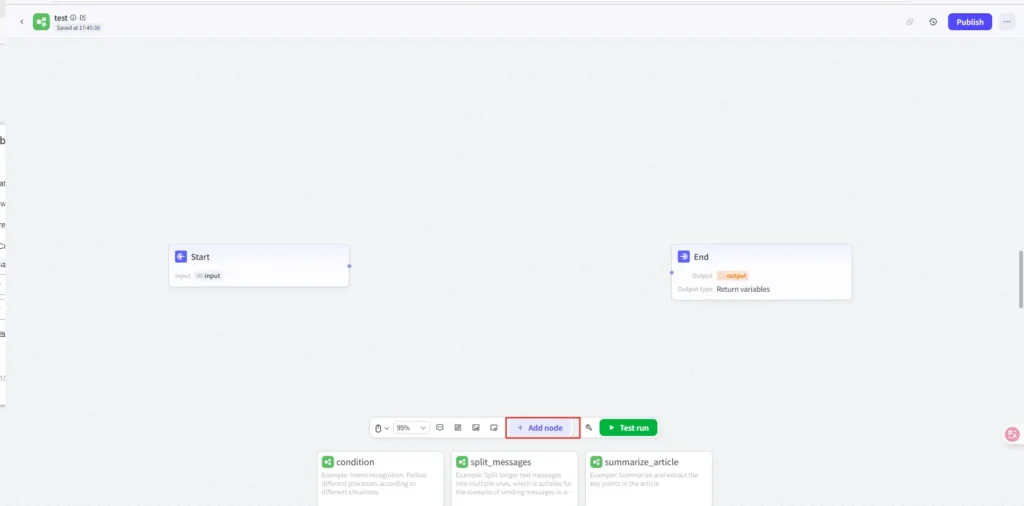
3. Search the marketplace for “CometAPI”: In workflow, select “add node”,click plugins and search “cometapi”,add this plugin;, Use the search field and type “CometAPI” — it will appear in results. Click the plugin card → add. Follow on-screen prompts to add credentials

3.In the “api key” input field, paste the “sk-xxxxx” key obtained from CometAPI;then test and publish.
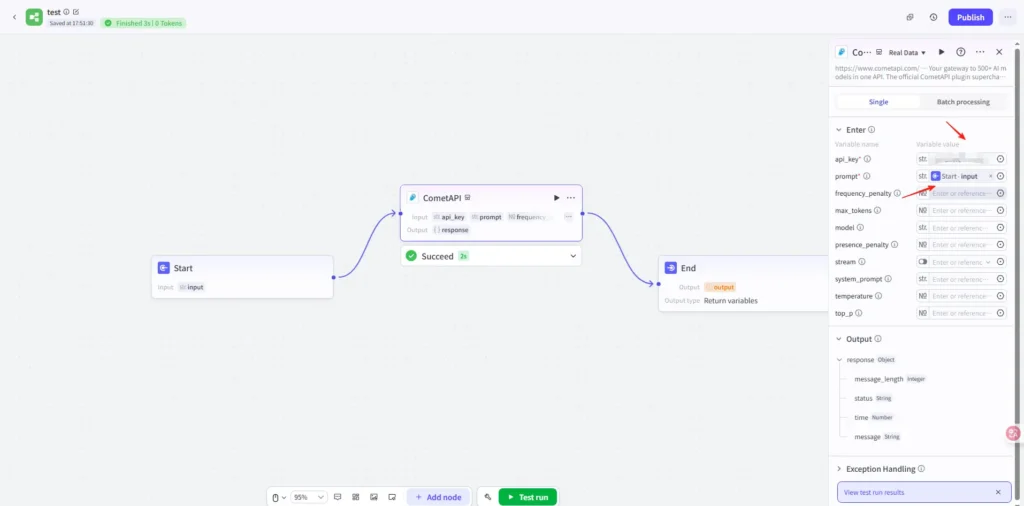
When to use this method
- There’s an official or community CometAPI plugin available.
- You prefer no-code setup and centralized plugin management.
- Your team wants the simplest route to production.
How can you integrate by creating an agent and using an API call node in the workflow? (Method 2)
This method gives you finer control at workflow runtime (routing, retries, conditional logic).
Step-by-step: create an agent + add an API call (HTTP) node
- Create an agent in Coze (Bot/Agent → Create). Configure persona, base prompt, and publish settings if you plan to expose it as an API later.
- Open Workflows for that agent and add a new workflow or edit an existing one. Workflows are visual sequences of nodes (message nodes, condition nodes, HTTP/API nodes, etc.).
- Add HTTP request node from the node palette . Configure the node to call CometAPI: set method
POST, URLhttps://api.cometapi.com/v1/chat/completions(or the model-specific path in your CometAPI docs), and add request headers and body. - In the Authentication token input field, paste the “sk-xxxxx” key obtained from CometAPI, then click “Confirm”.
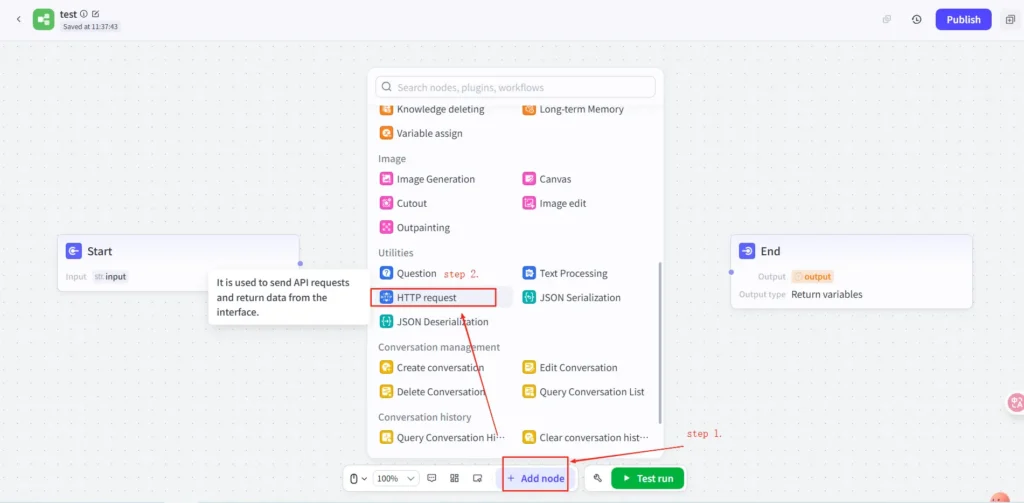
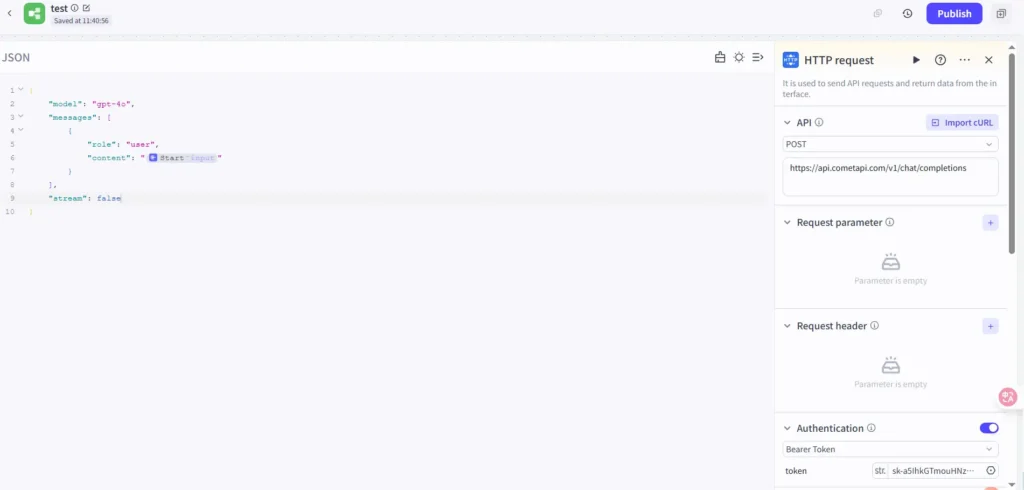
Example HTTP node configuration (non-streaming)
Headers:
Authorization: Bearer sk-<YOUR_COMETAPI_KEY>Content-Type: application/json
Body (JSON — OpenAI-style format supported by CometAPI):
{
"model": "gpt-4.1",
"messages": [
{"role":"system","content":"You are a helpful assistant."},
{"role":"user","content":"Summarize recent AI news in bullet points."}
],
"stream": false
}- Wire outputs back into the workflow. Map the HTTP response field (e.g.,
choices[0].message.content) into the subsequent message node or the agent response. Coze workflows let you extract JSON fields and reuse them as variables. - Handle streaming & long responses. If you need streamed tokens for a typing UX, Coze supports executing workflows in streaming response mode and exposes streaming events; use the streaming exec API if your nodes/outputs require it.
- For the end node’s output, select the HTTP request’s body, then test and publish.
- Test thoroughly. Use Coze’s Play/Test interface to run trial executions and inspect node-level input/output for debugging. Coze surfaces a trial run UI showing inputs/outputs per node which is extremely helpful for mapping plugin responses into agent text
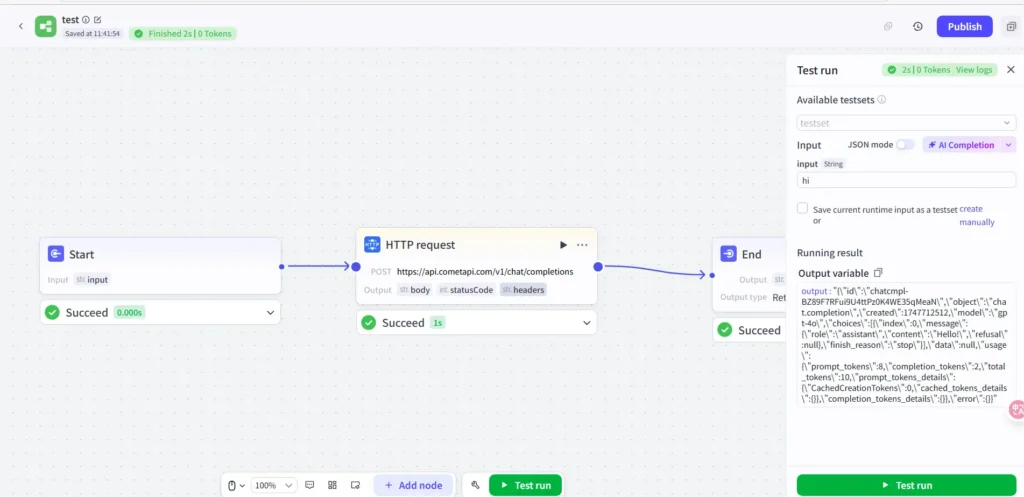
Best practices for production integrations
1) Secure your keys & use workspace secrets
Store CometAPI keys in Coze’s secret manager (or environment variables) and reference them in plugin/auth configuration. Never embed keys in prompts or node bodies.
2) Model selection & routing policies
- Use a tiered model strategy: low-cost models for basic Q/A, high-accuracy models for policy/legal/critical flows.
- Put selection logic into Coze workflows so you can A/B or change rules without redeploying code. CometAPI’s unified API makes switching the
modelparam trivial.
3) Timeouts, retries & backoff
Wrap your CometAPI calls with timeouts and exponential backoff in Coze workflow nodes. Add a fallback chain — if the preferred model times out, fall back to a cheaper or cached result. Coze supports conditional nodes and error handling to make this robust.
4) Cost control & observability
Track per-model token use and surface that in your observability stack. Use CometAPI’s dashboard for billing plus Coze logs for request-level debugging. Correlate agent events with CometAPI request IDs to troubleshoot.
5) Prompt engineering & tool descriptions
When creating plugin tools in Coze, write precise tool names and descriptions — Coze can pass these descriptions to the model to improve tool selection and calling accuracy. Keep the tool schema minimal and strongly typed.
6) Security & content moderation
If your agent interacts with user content, run a safety/moderation pass (CometAPI or your own filter) before passing sensitive results downstream. Always limit model outputs to avoid leaking secrets or PII from fine-tuned / retrieved content.
7) Test streaming vs batch
Streaming gives a better end-user typing experience, but is more complex to handle. Use Coze’s streaming execution only when you need incremental tokens — for many back-end tasks a single API call + response is simpler and cheaper.
What real use cases are best for Coze + CometAPI?
Use case: Multi-modal customer support assistant
- Flow: User message → agent decides (text LLM for understanding) → fetches knowledge base (plugin) → generates summary & suggested reply (CometAPI LLM) → optionally generates supportive images (Midjourney / Suno via CometAPI) → sends reply.
- Why it works: CometAPI lets you route text to high-quality reasoning models but send image tasks to specialist image models, all from one integration point.
Use case: A/B model evaluation in production
- Flow: Coze agent runs the same prompt against two different CometAPI models (e.g.,
o4-minivsgpt-4o) and records metrics (latency, user rating) to decide the winner. - Why it works: Centralized model switching makes A/B tests cheap to implement.
Use case: Document automation and summarization at scale
- Flow: Coze workflow receives a document URL, calls CometAPI (model specialized in long-context summarization), then extracts action items and writes a structured ticket to a downstream system.
- Why it works: CometAPI supports document/file input patterns (examples in their docs) and Coze offers workflow automation for downstream actions.
Use case: Creative pipelines (marketing assets)
- Flow: Prompt engineering node → generate tagline (LLM) → generate image (Midjourney or Runway model via CometAPI) → combine results into marketing brief → publish.
- Why it works: CometAPI’s multi-model catalog includes creative image/video generators that you can call programmatically in a single workflow.
Conclusion
Pairing Coze’s visual, workflow-first agent building with CometAPI’s broad, OpenAI-compatible model surface gives teams a powerful combination: the speed of low-code iteration plus the flexibility to choose best-fit models for each micro-task. Start with the plugin approach for rapid prototyping; move to explicit API-call workflows when you need finer control over headers, streaming, retries, or to orchestrate multi-model pipelines. Monitor cost and quality closely, and keep model selection configurable so you can evolve as the model landscape changes.
Getting Started
CometAPI is a unified API platform that aggregates over 500 AI models from leading providers—such as OpenAI’s GPT series, Google’s Gemini, Anthropic’s Claude, Midjourney, Suno, and more—into a single, developer-friendly interface. By offering consistent authentication, request formatting, and response handling, CometAPI dramatically simplifies the integration of AI capabilities into your applications. Whether you’re building chatbots, image generators, music composers, or data‐driven analytics pipelines, CometAPI lets you iterate faster, control costs, and remain vendor-agnostic—all while tapping into the latest breakthroughs across the AI ecosystem.
To begin, explore the model’s capabilities in the Playground and consult the Coze Integration Guide for detailed instructions. Before accessing, please make sure you have logged in to CometAPI and obtained the API key. CometAPI offer a price far lower than the official price to help you integrate.
Ready to Go?→ Sign up for CometAPI today !

